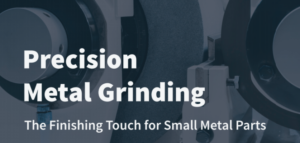At the height of summer our thoughts naturally turn to the weather and the ways in which heat can affect materials and the tools used to measure tight tolerances.
The issue is that heat can cause metals (and other materials) to expand and impact whether a part is in or out of spec.
For very tight tolerances, heat expansion results in either metal parts failing inspection or, more commonly, a customer and supplier coming up with different measurements for the same part.
What does heat do to metal?
The expansion (or contraction) of any material is due to the kinetic energy of its atoms. When a material is heated, the increase in energy causes the atoms and molecules to move more and to take up more space— that is, to expand.
However, different metals respond to heat differently depending on each one’s unique coefficient of thermal expansion. So if you have a very tight tolerance part, you probably want to choose a metal that is highly stable and not subject to a lot of variation due to changes in temperature.
Where else is temperature a factor?
Did you know temperature can also have an impact on measurements when checking whether parts are within spec?
Theoretically, manufactured parts should always be measured at the same temperature under which the chosen measuring tool was calibrated. However, the reality is that on many shop floors, there often is no way to know the ambient temperature much less control it and make sure it matches the environment where various measuring tools were calibrated.
Are there other factors in the heat expansion of metals?
Yes! When a part is measured can have an effect on the dimensions of the part. A freshly cut part may be hot or cold and therefore have a slightly different dimension than if measured later.
Atmospheric pressure can also have a very subtle impact on parts measurement, with metals expanding when they are under less pressure.
The magnitude of the part size comes into play here too . With relatively longer or larger diameter parts, variations are more obvious and difficult to keep within a tight tolerance.
Finally, multiple materials may be used in a finished product, where each material has its own coefficient of thermal expansion.
So, how can you minimize metal expansion from heat?
In a perfect world, all parts would be cut and inspected by a supplier and then inspected and used by the customer in virtually identical environments. While achieving identical temperature and humidity in multiple locations is unlikely, there are steps that can be taken to minimize or eliminate the effects.
When it is possible, production, inspection, and quality control areas should operate under the same environmental conditions.
More importantly, it is crucial to think about where the end product will be used. Will the part ultimately be used in a controlled environment, where a tight tolerance can be maintained? Or will the product be used in a very hot environment, indicating a need to open up the tolerances so that the product’s functionality won’t be jeopardized?
As always, these and other considerations are vitally important when specifying dimensions and tolerances to produce the finished parts your project requires.





